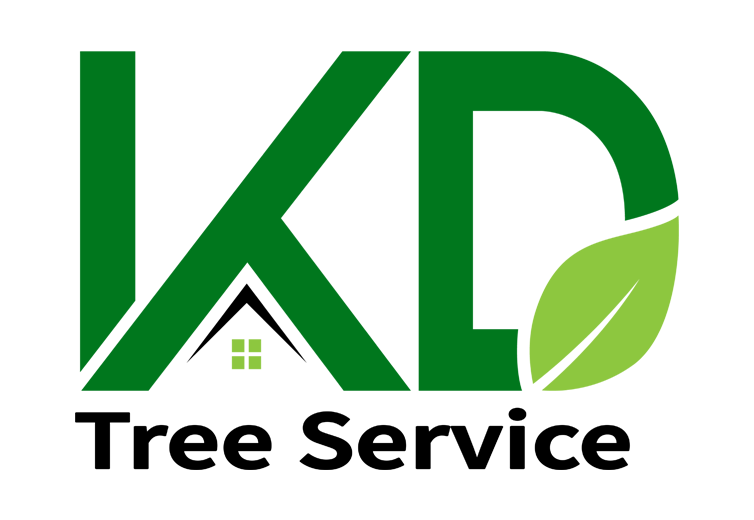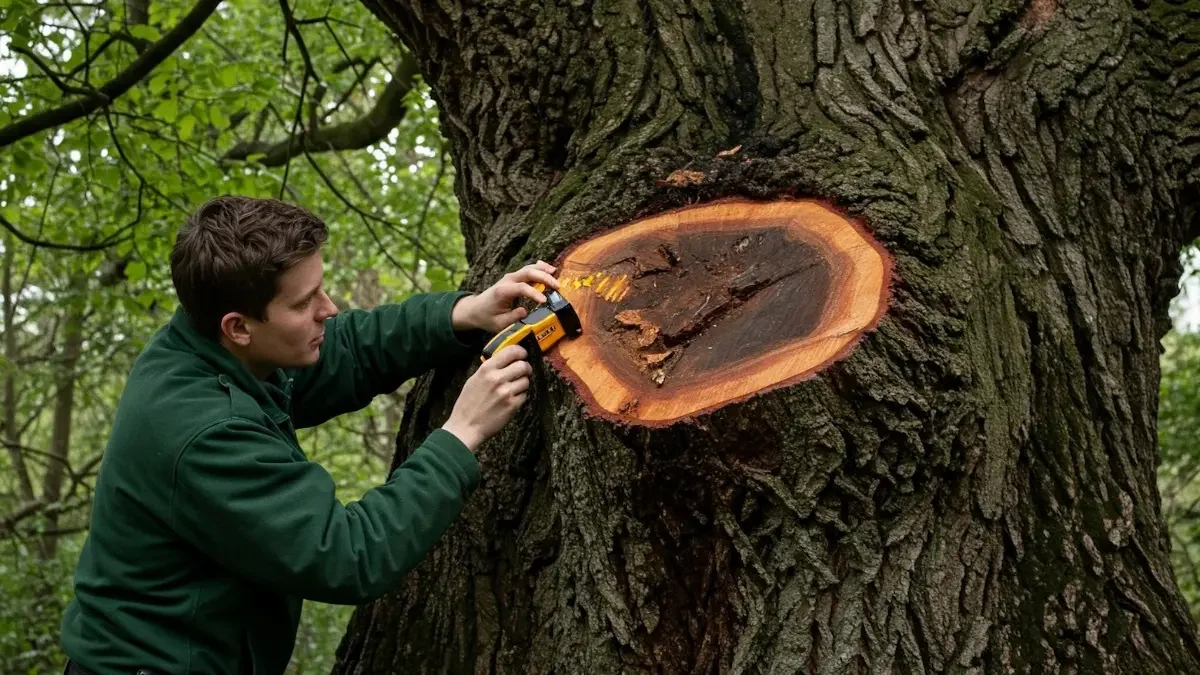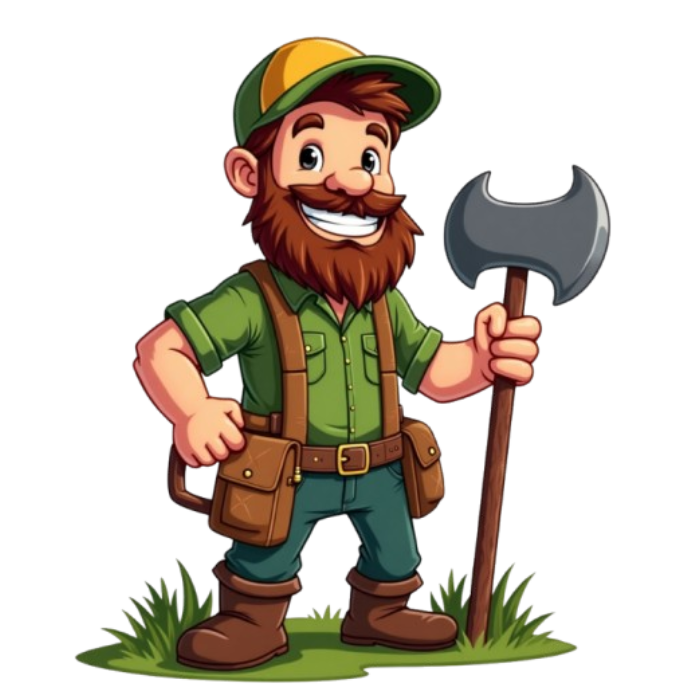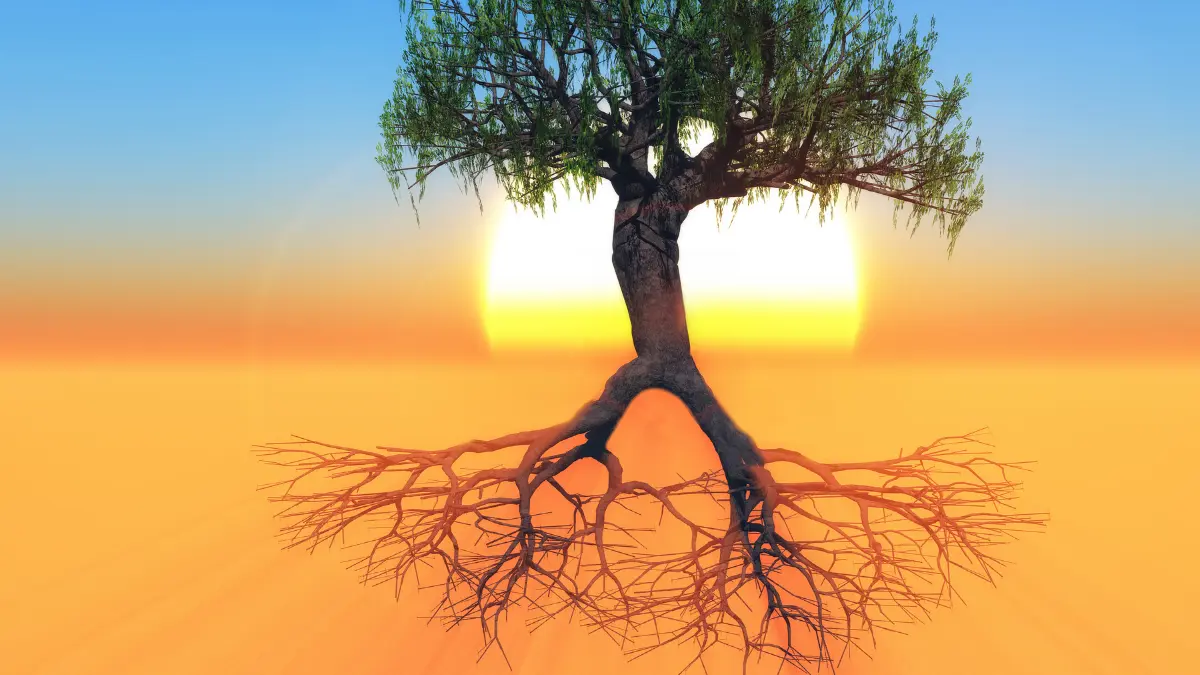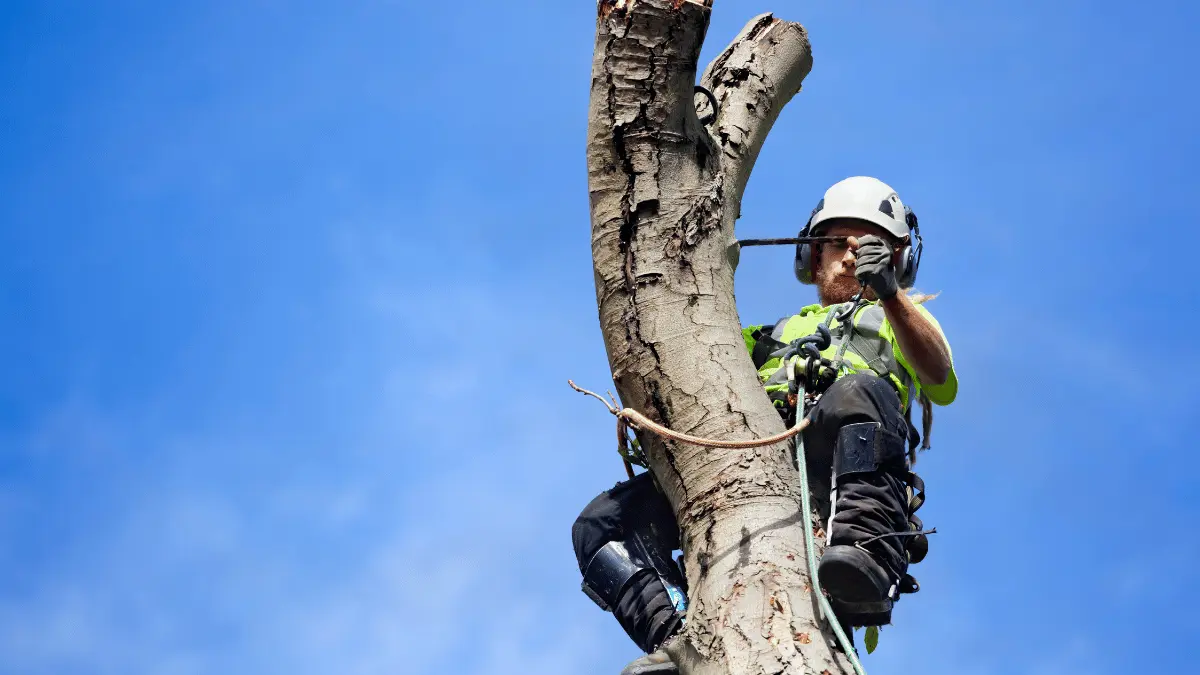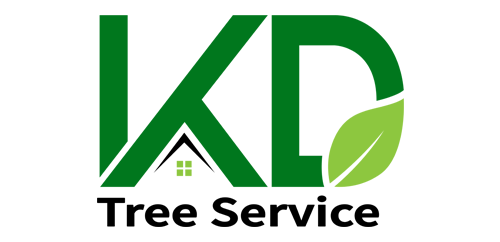Trees are a vital part of any landscape, providing shade, beauty, and even boosting property value. However, just like any living thing, trees can suffer from disease, damage, and decline. Ignoring the warning signs of a tree can lead to dead tree hazards, costly removals, and even damage to your property. In this blog, we’ll explore eight key signs that indicate your tree may be in distress and ways for a tree health assessment– so you can take action before it’s too late!
Why Early Detection Matters?
Before getting to know the signs, first let’s get to know the importance of identifying the risk earlier!.Regardless of external factors like extreme weather conditions, trees can be dangerous due to inbuilt weaknesses. A dying or hazardous tree can lead to falling branches, property damage, and even personal injury – especially during extreme weather emergency tree removal services are required. While trees naturally drop branches, only a few become dangerous enough to cause harm.
As a tree owner, it’s your responsibility to monitor its health and take action when warning signs appear. Regular tree care helps identify potential hazards early, allowing you to address issues before they escalate. Consulting a professional arborist can ensure proper evaluation and safe hazardous tree removal if necessary. Detecting problems early not only protects your property and loved ones but also helps maintain a healthy environment.
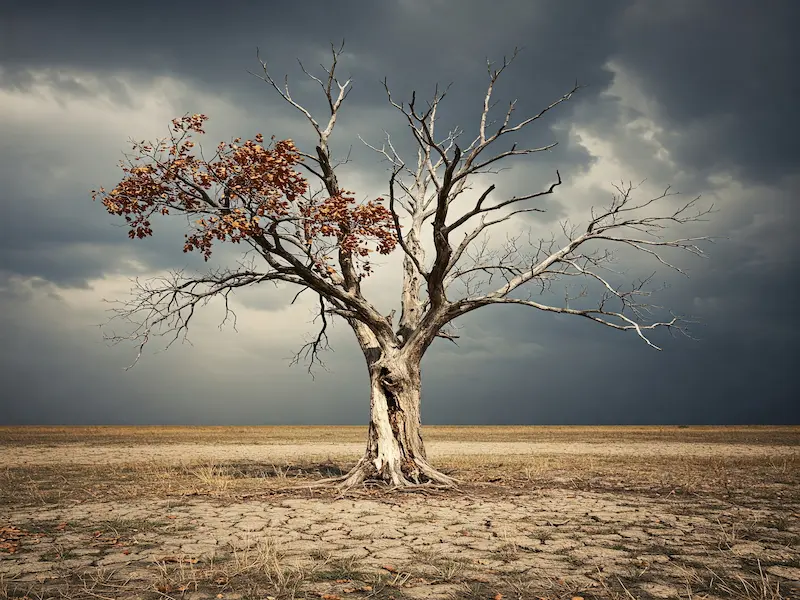
5 Signs Your Tree Is Dying
how to tell if a tree is dead?, look for signs like no leaves during the growing season, peeling or cracked bark, fungus growth, brittle branches, deep trunk cracks, or significant leaning. Regular inspections, such as examining leaf color, checking for strong bark, and conducting a scratch test, help determine how to check if a tree is healthy. – if the layer beneath the bark is dry and brown, then the tree is more likely dead. Here let me explain the signs more in detail,
Dead or Falling Branches
Tree parts which have stopped growing or died are called “Dead wood”. It can be caused by aging, disease, pests or environmental stress. Leafless branches, missing bark and brittle or decaying wood are the signs for a dying tree. Traits like temperature and moist change variations will lead stress to a tree.Seasonal abnormalities like extreme cold, heavy snow, strong winds, and drought can weaken trees, causing branches to die or break and fall into the ground or a property or a person. Regular pruning and care help prevent these risks.
Dead branches or falling branches are a clear sign of a dying tree, as they indicate a breakdown in the tree’s circulatory system. When branches of a tree die, nutrient flow of the tree is disrupted, it will affect the tree’s overall health. If the dieback starts at the top and spreads downward, it’s a strong indication that the tree is in serious decline.
To avoid dead trees certified arborists suggest tree canopy thinning as a solution. Tree canopy thinning is basically removing selective branches from the tree. By doing this the interior of the canopy can be able to get more sunlight and air, this leads to a healthy journey for a tree!
Bark Damage or Peeling
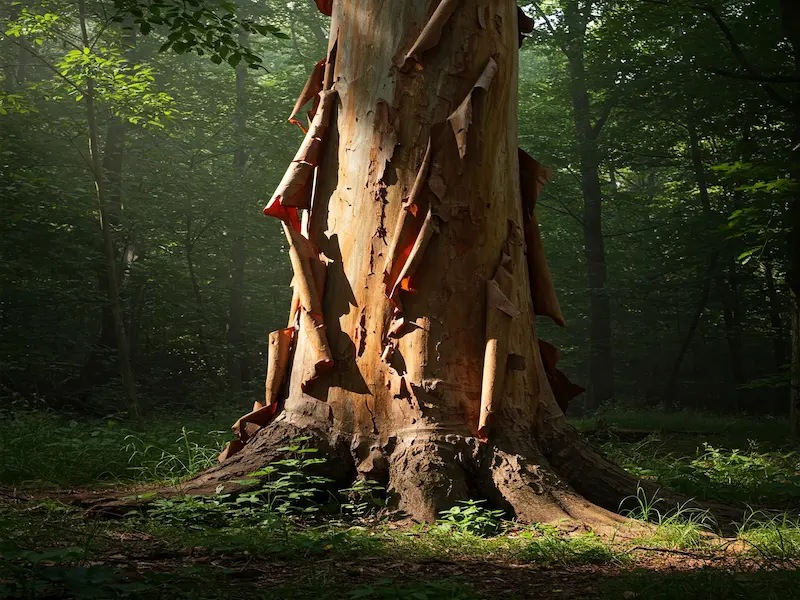
Bark damage or peeling can signal that a tree is dying, as it disrupts nutrient transport and weakens the tree’s structure. While some trees naturally drop bark, large sections falling off may indicate disease or decay. If extensive damage is present, consulting a professional is essential to assess the tree’s health.
Cracks and splits in tree branches or trunks let the internal tissues of the tree get affected by harmful pathogens, and allowing fungi or bacterias inside which will cause tree diseases. Tree trunk cracks and bark damages will weaken the tree’s structure. It will leads to disrupt tree’s natural defences, and leave it more exposed to additional damage, disease and make a way for premature deaths of a tree.
Fungus or Mushroom Growth
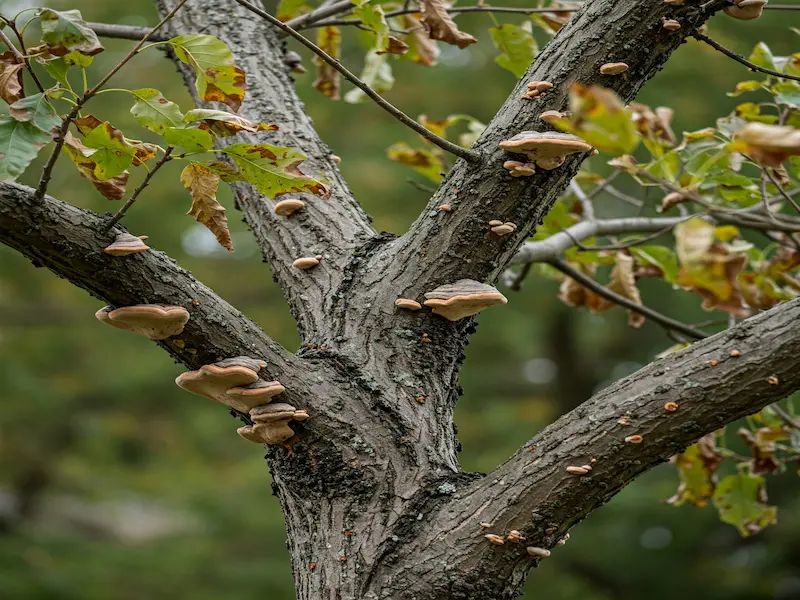
The presence of fungus or mushrooms on a tree is a strong sign of decay and potential tree death. Fungi enter inside a tree through wounds in bark and grow inside. Extensive fungal growth leads to enzyme release which breaks down cellulose and lignin which weakens the tree’s structure, leading to instability of a tree which results in internal decay. Causes like improper pruning, fire and lightning can lead to growth of shelf mushrooms in a tree. Root rot disease can also be a consequence of mushroom growth. If the tree leans or shows root rot signs, conducting an urgent inspection could be a wise option.
Leaning Tree or Trunk Instability
A leaning tree or trunk instability is a major warning sign that a tree is dying. It often signals root damage, structural weakness, or internal decay, making the tree vulnerable to collapse. A sudden shift in lean in a tree indicates root system issues, generally triggered by soil erosion, intense weather and root damages, this will make the tree unsteady and leaning tree danger increase the risk of falling particularly nearby homes or pathways.
Soil heaving occurs when soil around a tree moves upward, frequently due to tree removal, saturated soil or extreme weather.Storm damage refers to injuries a tree sustains from strong winds, heavy rain, hail, or lightning. The intensity of storm conditions together with tree health conditions determines whether trees sustain broken branches or full uprooting. An arborist Consultation can help assess the severity of the issue and sometimes to prevent potential damage an emergency tree removal required.
Root Decay or Soil Issues

Root decay or soil problems are serious signs that a tree is dying. Decaying roots struggle to absorb water and nutrients, leading to drying leaves, limited growth, and discoloring leaves. Visible signs like rotting roots or fungal growth at the bottom indicate severe issues in a tree.
A common root decay symptom is soft, mushy roots, which are caused by fungal infections and excessive moisture decomposing the roots and impairing their ability to absorb nutrients and water. Poor drainage, soil compaction, and nutrient imbalances can further weaken the tree, and left construction damages. These kinds of tree root problems will accelerate its decline.
For a more in-depth guide on spotting signs of a dying or dead tree, check out this resource on how to tell if a tree is dead from Penn State Extension.
Immediate Actions to Take
Identifying when to remove a dead tree is crucial to prevent potential hazards like falling branches or structural collapse. In this phase you require more help and assistance.
Consult a Certified Arborist
If your tree shows any sign mentioned above, it means your tree is in danger. To save your tree from a black and white life and add getting back to its colorful era all you need to have to do is an arborist consultation. By consulting certified arborists and conducting a tree health assessment you are postponing the unfortunate farewell of your tree.
Professional Removal Process
Professional tree removal ensures safety with proper gear and controlled cutting. It is necessary to obtain permits before. The cost of tree removal varies based on factors like tree size, location, and complexity of the job. DIY tree removal attempts are dangerous but hiring tree professionals ensure both safety and efficient performance.
Preventing Future Issues
Inspect trees regularly for any indications of decay and pests and structural issues. By following tree care tips such as proper pruning and proper assessment of water supply and soil conditions will promote strong root systems. Prevent tree diseases by ensuring proper watering, mulching, and early pest control.
FAQs
If you failed to recognize those signs and ignored the actions required to take then you may have to face property damage coupled with the risk of falling branches. A safe environment requires both early detection and quick action between proper tree maintenance or expert professional intervention. Contact a certified arborist immediately for complete tree health assessment when you think your tree shows signs tree is dying. Address security needs first and then proceed with necessary steps for danger prevention. Reaching out to emergency tree services or searching for dependable tree removal services near you!
For expert assistance, contact KD tree services!

